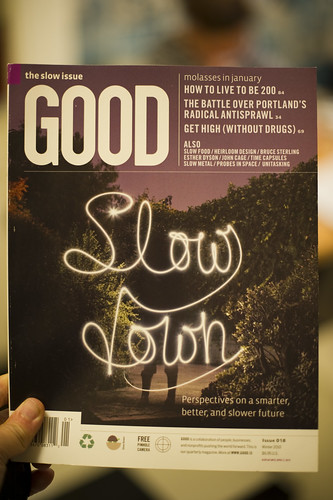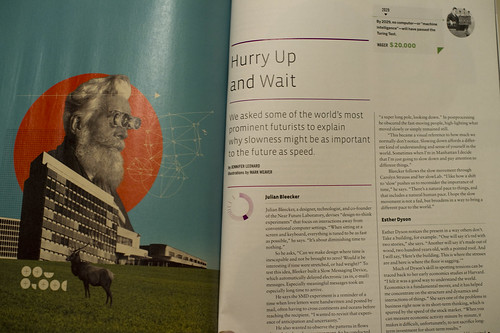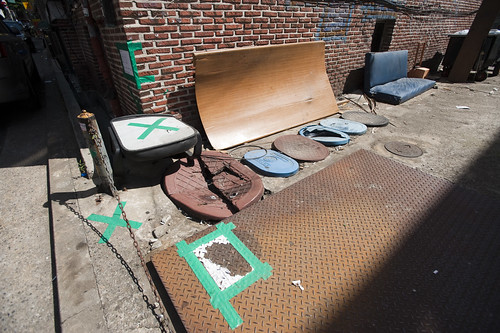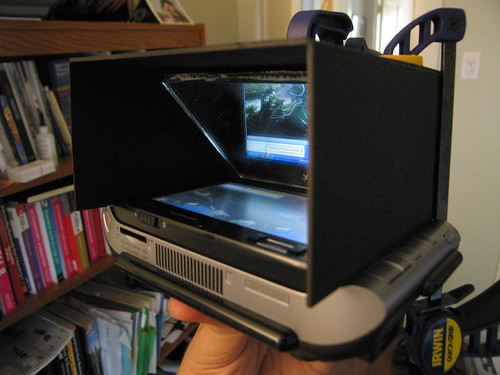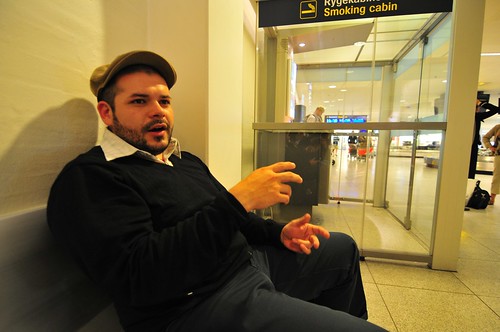In the last weeks of December, I blogged about this fascinating project called "Supercargo: a parable of desire". In this tumblr collecting intriguing examples of current cargo cults, Peter Moorsgard provides us with an exhaustive display of what he calls "Supercargo". He defines it as "ritual appropriation + subversive mimickry". I'm definitely mesmerized by these examples, which I find both curious and revealing; which is why I started chatting with Peter. This is the resulting interview:
Nicolas Nova: Can you tell us more about your supercargo tumblr? What's the logic behind it and how did you become interested in this?
Peter Moorsgard: I think it was about 2005 in south-tirol when i read about cargo cults on a trivial persuit card. i was studying digital arts at that time and got extremely bored with technology. Media arts and digital culture seemed too much about technological progress at that time. everybody was just celebrating technology itself, but technology is never just a cool tool. its pure ideology. the artistic approaches on the other hand were extremely lame. do you know ars electronica festival? it became more and more of a toy expo. i was intrigued by the cargo cults because they celebrated and mocked technology, culture, imperialsim at the same time. i thought, well maybe theres a strategy! when i was crippled by a major depression and panic attacs in 2013 i started the Supercargo Blog. i found myself completely unable to work, but could still surf tumblr, repost stuff etc .. posting became a daily ritual for me and it still is. i just try to put together sets of images with found material, maybe some day i will be able to work again.
““These are LAVR-glasses (Lower Austrian Virtual Reality) I built together with local youngsters. after the image of 90ies VR promises, we buitt these for Supercargo (the movie), which is about the founding myth of the artistic cargo cult in Austria.””
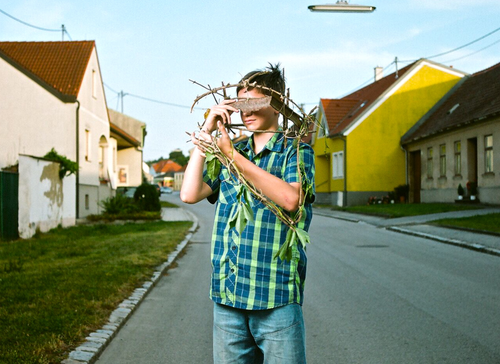
NN: There seems to be a growing interest in this kind of projects, this sort of logic. I'm thinking about this Futur Archaïque exhibit in Belgium I mentioned, but also other art/design projects related to it. Why do you feel this is happening now?
PM: I think something like this is in the air, and its getting bigger. why, i dont know .. maybe its an archaic revival in connection with digital media. Terence McKenna described that conclusively decades ago, and i think he is still right. as advanced these technologies are, they set us back into a mystic perception, a general attraction to archaic forms. we just have to adapt to immense data income every day, logic has to be set aside simply to cope with a hypernervous global culture. it all becomes archaic and mythological. it is just a necessary strategy. another more mundane explanation would be, that people are just getting fed up with the slick, sterile utopia apple is trying to sell us.


“these are cargo phones i found on tumblr, a kind of stone age communication, or maybe rebuilt from collective memory after the pulsar-apocalypse.”
NN: Do you see this relate to this "post-digital" art scene that we see popping up these days? A need to go beyond the digital?
PM: Yes the postdigital aspect was always very important in my work. i started making postinternet stuff before it even had a name. i tried to see art and technology from the viewpoint of the simple consumer. basically because i myself had no skills at all, no programming skills, no crafting skills etc .. and i find everybody can relate to that everything else is not subversive/emancipatory in my eyes. in my view we´re more and more trying to work like machines, like computers. but how would a simple human do that, not trying to imitate a machine? the postdigital has many forms, and with "supercargo" i took my simplistic position. use only poor materials, embrace capitalist mythology, make a second hand utopia. its a free party from now on!
NN: Lots of these projects are fascinating because they interrogate us about the nature/culture debate. From your perspective, as an astute observer of such projects, what do they tell us about our relationship to technology?
PM: Culture, art and technology are basically utopia factories. you can relate and research (maybe subvert) that in form of simple products. messianic devices, artwork masterpieces, they are part of a larger system. they all have their histories, rules, all these invisible forces manifest in products. the way i see it, we are living in a time governed by cybernetics alone. it was allways in the interest of cybernetics to describe organisms and technology alike. to make a supersystem for processes be it biological or cultural. that is frightening in the end. anyway, maybe through cybernetic thinking we can realise that technology isn't artificial at all. we are just a material processing species, like bees producing honeycombs. i find it interesting to look at the material world again, as we are absorbed in informational worlds. Mcluhan said that every new medium absorbs the old media as its content, therefore making it visible AGAIN. Look at todays TV Shows, they became an artform after the internet absorbed TV. Now the World itelf is upon total simulation. The physical world is becoming visible for the first time i think, and material world will be a cult- a fetish.
“these are so called “Dre Beets”. i couldnt figure out who built them, but they are kind of the asian brother of the cargo cult: Shanzhai”

NN: It's interesting to see Cargo Cults as the new sort of belief, beyond the Western/non-Western distinction, a sort of general perspective on things with a strange relationship to consumerism and material culture, what's your take on this?
PM: As written in the Supercargo Manifesto: Surprisingly the local performers of the Cargo Cults succeeded: By remaking western technology with bamboo, they attracted actual planes full of tourists and anthropologists. People got interested in the exotic parades using western imagery. The John Frum Movement (“John from Merica”) suddenly had an audience, soon bringing actual stuff (cargo) to the island. The cargo shaman once said: You build your plane too and wait in faith. the waiting is the hardest part. According to some shamans the planes awaited will also bring weapons to throw off colonialist oppressors. The cargo cults are strange mockups of imperialism, at the same time keeping old traditions. But is the cult for real or just performance? It does not matter, no difference, it is about the act. The Tale of the Cargo ringing true on so many levels. The cult of the cargo is our world exactly: We perform meaningless routines we call work,in hope for future cargo. With a technology that could navigate us to the moon, we write LMAO. The western world itself is a giant cult of imitating things that somehow work: dressing in suits, using buzzword-vocabulary, mimicking old forms of art. who knows why.. The longing for godlike goodies on the horizon, the usage of things we don´t understand: a big parable of desire. The waiting, the waiting is the hardest part!
NN: thanks for your answers and good luck with the project, keep us posed.


